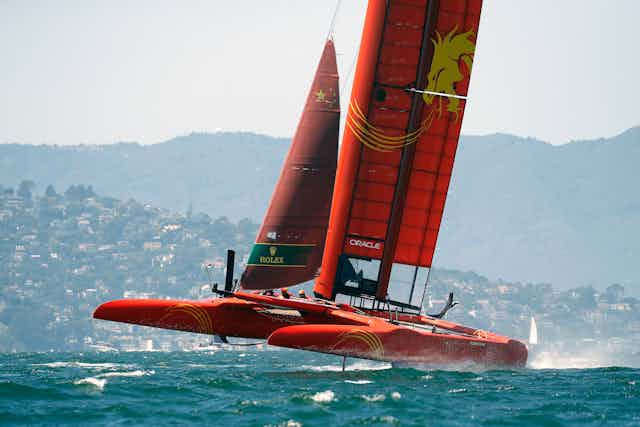

Sail GP: how do supercharged racing yachts go so fast? An engineer explains
Head of Engineering, Warsash School of Maritime Science and Engineering, Solent University
Disclosure statement
Jonathan Ridley does not work for, consult, own shares in or receive funding from any company or organisation that would benefit from this article, and has disclosed no relevant affiliations beyond their academic appointment.
View all partners
Sailing used to be considered as a rather sedate pastime. But in the past few years, the world of yacht racing has been revolutionised by the arrival of hydrofoil-supported catamarans, known as “foilers”. These vessels, more akin to high-performance aircraft than yachts, combine the laws of aerodynamics and hydrodynamics to create vessels capable of speeds of up to 50 knots, which is far faster than the wind propelling them.
An F50 catamaran preparing for the Sail GP series recently even broke this barrier, reaching an incredible speed of 50.22 knots (57.8mph) purely powered by the wind. This was achieved in a wind of just 19.3 knots (22.2mph). F50s are 15-metre-long, 8.8-metre-wide hydrofoil catamarans propelled by rigid sails and capable of such astounding speeds that Sail GP has been called the “ Formula One of sailing ”. How are these yachts able to go so fast? The answer lies in some simple fluid dynamics.
As a vessel’s hull moves through the water, there are two primary physical mechanisms that create drag and slow the vessel down. To build a faster boat you have to find ways to overcome the drag force.
The first mechanism is friction. As the water flows past the hull, a microscopic layer of water is effectively attached to the hull and is pulled along with the yacht. A second layer of water then attaches to the first layer, and the sliding or shearing between them creates friction.
On the outside of this is a third layer, which slides over the inner layers creating more friction, and so on. Together, these layers are known as the boundary layer – and it’s the shearing of the boundary layer’s molecules against each other that creates frictional drag.
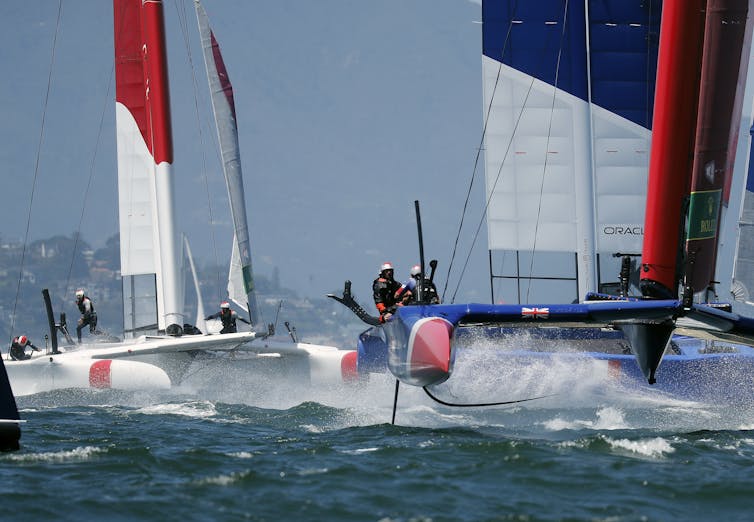
A yacht also makes waves as it pushes the water around and under the hull from the bow (front) to the stern (back) of the boat. The waves form two distinctive patterns around the yacht (one at each end), known as Kelvin Wave patterns.
These waves, which move at the same speed as the yacht, are very energetic. This creates drag on the boat known as the wave-making drag, which is responsible for around 90% of the total drag. As the yacht accelerates to faster speeds (close to the “hull speed”, explained later), these waves get higher and longer.
These two effects combine to produce a phenomenon known as “ hull speed ”, which is the fastest the boat can travel – and in conventional single-hull yachts it is very slow. A single-hull yacht of the same size as the F50 has a hull speed of around 12 mph.
However, it’s possible to reduce both the frictional and wave-making drag and overcome this hull-speed limit by building a yacht with hydrofoils . Hydrofoils are small, underwater wings. These act in the same way as an aircraft wing, creating a lift force which acts against gravity, lifting our yacht upwards so that the hull is clear of the water.

While an aircraft’s wings are very large, the high density of water compared to air means that we only need very small hydrofoils to produce a lot of the important lift force. A hydrofoil just the size of three A3 sheets of paper, when moving at just 10 mph, can produce enough lift to pick up a large person.
This significantly reduces the surface area and the volume of the boat that is underwater, which cuts the frictional drag and the wave-making drag, respectively. The combined effect is a reduction in the overall drag to a fraction of its original amount, so that the yacht is capable of sailing much faster than it could without hydrofoils.
The other innovation that helps boost the speed of racing yachts is the use of rigid sails . The power available from traditional sails to drive the boat forward is relatively small, limited by the fact that the sail’s forces have to act in equilibrium with a range of other forces, and that fabric sails do not make an ideal shape for creating power. Rigid sails, which are very similar in design to an aircraft wing, form a much more efficient shape than traditional sails, effectively giving the yacht a larger engine and more power.
As the yacht accelerates from the driving force of these sails, it experiences what is known as “ apparent wind ”. Imagine a completely calm day, with no wind. As you walk, you experience a breeze in your face at the same speed that you are walking. If there was a wind blowing too, you would feel a mixture of the real (or “true” wind) and the breeze you have generated.
The two together form the apparent wind, which can be faster than the true wind. If there is enough true wind combined with this apparent wind, then significant force and power can be generated from the sail to propel the yacht, so it can easily sail faster than the wind speed itself.
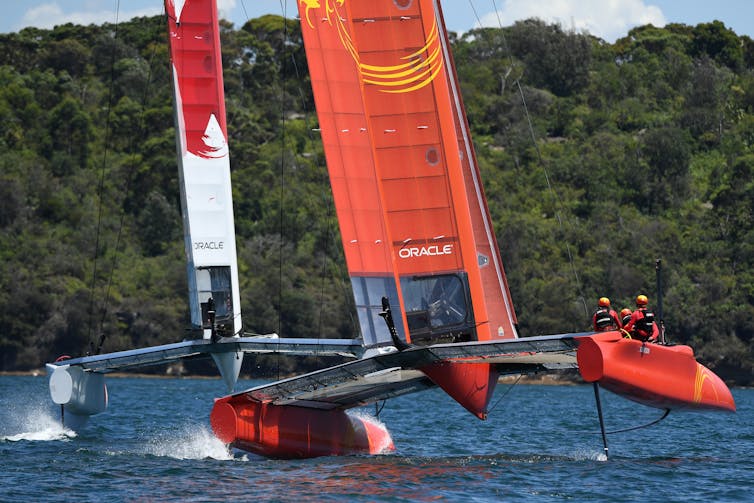
The combined effect of reducing the drag and increasing the driving power results in a yacht that is far faster than those of even a few years ago. But all of this would not be possible without one further advance: materials. In order to be able to “fly”, the yacht must have a low mass, and the hydrofoil itself must be very strong. To achieve the required mass, strength and rigidity using traditional boat-building materials such as wood or aluminium would be very difficult.
This is where modern advanced composite materials such as carbon fibre come in. Production techniques optimising weight, rigidity and strength allow the production of structures that are strong and light enough to produce incredible yachts like the F50.
The engineers who design these high-performance boats (known as naval architects ) are always looking to use new materials and science to get an optimum design. In theory, the F50 should be able to go even faster.
- Engineering
- Aerodynamics

Clinical Education Strategy & Risk Project Officer

Senior Research Fellow - Women's Health Services

Lecturer / Senior Lecturer - Marketing

Assistant Editor - 1 year cadetship

Executive Dean, Faculty of Health
- Yachting World
- Digital Edition

World’s coolest yachts: F50
- May 28, 2021
We ask top sailors and marine industry gurus to choose the coolest and most innovative yachts of our times. This month Nathan Outteridge nominates the foiling cat used in SailGP, the F50

“Without question the SailGP F50 is the best boat that I have ever sailed. The headline top speeds of over 50 knots are impressive, but there is so much more to these incredible boats.
“The boats are inherently unstable, and so require constant adjustment of the foils to keep them flying at optimum levels. Initially the boats were very hard to sail; the foils are very unstable and not as forgiving as were used in the Bermuda America’s Cup , but with the help of sophisticated computer aided flight controls and user-friendly flight controller hardware the boats are now far easier to sail, which makes for better, closer racing.

Outteridge crossing the F50 mid manoeuvre. Photo: Craig Greenhill/SailGP
“By having battery power banks on board, the sailors effectively have unlimited power on demand. The boats can be pushed harder and sailed more accurately due to this unlimited power, and as a result the sailors’ skills become more critical and racing becomes more of the focus.
“There are no excuses on these boats.”
F50 stats rating:
Top speed: 50+ knots LOA: 15m/49ft Launched: 2018 Berths: 0 Price: $4m Adrenalin factor: 95%
Nathan Outteridge
Australian Nathan Outteridge is an Olympic Gold Medallist in the 49er and foiling Moth world champion. He helmed for Artemis Racing in the 2013 and 2017 America’s Cups. In 2018 he was involved in the development of the F50 class from the AC50s, and helmed the Japanese SailGP entry in 2019. He is also helming the Japanese entry in 2021’s second SailGP season . Prior to that he was one of the commentators on the 36th America’s Cup.
If you enjoyed this….
Yachting World is the world’s leading magazine for bluewater cruisers and offshore sailors. Every month we have inspirational adventures and practical features to help you realise your sailing dreams. Build your knowledge with a subscription delivered to your door. See our latest offers and save at least 30% off the cover price.

How Does F50 Catamaran Work? (Here’s What You Need To Know)

The F50 Catamaran is one of the most advanced sailing vessels ever built, and its impressive performance has made it the choice for Americas Cup racing.
But what exactly makes the F50 Catamaran so impressive? In this article, well take a closer look at the F50 Catamaran, from its hull design and aerodynamic shape to its lightweight carbon fiber mast and advanced sail design.
Well also explore the F50 Catamarans speed and stability, and how it has performed in Americas Cup racing.
Join us as we explore the amazing engineering and design of the F50 Catamaran!
Table of Contents
Short Answer
F50 catamarans are high-performance racing boats that feature a lightweight, carbon-fiber hull.
They are designed to be very responsive and easy to maneuver, with a symmetrical hull, narrow beam, and large sail area.
The two hulls of the catamaran provide stability, and the wings provide lift, allowing the boat to move quickly and efficiently over the water.
The F50 catamaran uses hydrofoils to reduce drag and increase speed, allowing it to reach speeds of up to 50 knots.
Overview of the F50 Catamaran
The F50 Catamaran is a revolutionary racing yacht designed for the America’s Cup.
It is equipped with a unique hull design, allowing it to reach speeds of up to 50 knots and sail in more extreme conditions than most other boats.
The F50 is built with advanced aerodynamics and a lightweight carbon fiber mast, ensuring maximum performance and stability on the water.
Its hydrofoil system allows it to lift out of the water and glide over the surface, providing greater speed and stability than traditional sailing boats.
Additionally, the F50 is equipped with an advanced sail design, allowing for powerful and precise sailing performance.
All of these features combine to make the F50 an exceptional racing boat that can take on the toughest of conditions.
Hull Design

The F50 Catamaran is a high-performance racing yacht designed for the America’s Cup.
Its innovative hull design provides exceptional stability and speed, allowing it to reach speeds of up to 50 knots and sail in more extreme conditions than most other boats.
The F50’s hull is made up of two parallel hulls that are connected by a trampoline-style platform, giving it a V-shaped structure.
This unique design helps reduce drag and increases the boat’s overall efficiency.
Additionally, the hulls are designed with a large surface area to create lift, which helps the boat rise out of the water and glide across the surface.
This allows the boat to reach higher speeds and remain stable in choppy waters.
The F50 also has a strong and lightweight carbon fiber mast and advanced sail design, allowing for powerful and precise sailing performance.
With all of these features combined, the F50 is an impressive racing boat that can take on the toughest of conditions.
Aerodynamic Shape and Hydrofoil System
The F50 Catamaran is a high-performance racing yacht designed specifically for the America’s Cup.
Its unique hull design and advanced technology allow it to reach speeds of up to 50 knots and sail in more extreme conditions than most other boats.
One of the primary features that make the F50 an exceptional boat is its aerodynamic shape and hydrofoil system.
The F50s aerodynamic design reduces drag and helps the boat move more efficiently through the water.
The shape of the hull is designed to produce lift and reduce turbulence, allowing it to reach higher speeds.
Additionally, the F50 is equipped with a hydrofoil system that allows it to lift out of the water and glide over the surface at higher speeds.
The hydrofoils are long, thin wings that are attached to the hull and are designed to reduce the boats wetted surface area and increase its lift.
The combination of the aerodynamic shape and hydrofoil system allow the F50 to sail faster, more efficiently, and in more extreme conditions.
The F50 also features a lightweight carbon fiber mast and advanced sail design.
The sails are made from a lightweight and strong material, which allows them to be shaped to produce more power and maneuverability.
The combination of the lightweight mast and advanced sail design allow the F50 to produce powerful and precise sailing performance.
All of these features combined make the F50 an exceptional racing boat that can take on the toughest of conditions.
With its aerodynamic shape and hydrofoil system, lightweight carbon fiber mast, and advanced sail design, the F50 is truly a unique and powerful boat.
Lightweight Carbon Fiber Mast

The F50 Catamaran is equipped with a lightweight carbon fiber mast, allowing for superior performance in extreme sailing conditions.
The carbon fiber construction is significantly lighter than more traditional materials such as aluminum, allowing for a more nimble and agile boat.
The carbon fiber mast is also more rigid than other materials, providing greater stability and control in the water.
Additionally, the carbon fiber construction is resistant to corrosion, making it ideal for longer sailing journeys.
The mast also features an aerodynamic shape, allowing for greater efficiency and speed in the water, as well as a greater range of motion and maneuverability.
The combination of the lightweight construction, aerodynamic shape, and superior stability make the F50 Catamarans carbon fiber mast an ideal choice for high-performance racing.
Advanced Sail Design
The F50 Catamaran is equipped with a highly advanced sail design, enabling it to achieve unprecedented levels of power and precision when sailing.
The F50’s sails are made from lightweight yet extremely durable carbon fiber, allowing them to hold up in extreme conditions.
The sails are designed with a unique aerodynamic shape that helps them to capture more wind power and reduce drag, allowing for faster speeds and greater control.
Additionally, the sails are equipped with specialized battens and reefing systems that allow for precise adjustments to the sail shape, allowing the F50’s crew to maximize performance in any wind conditions.
The F50’s sails are also designed with specialized sailcloth that is designed to reduce turbulence, further increasing the boat’s speed and stability.
All of these features combine to make the F50’s sails one of the most advanced and powerful on the market, enabling it to take on the toughest of conditions and sail faster and smoother than any other boat.
Speed and Stability

When it comes to sailing, speed and stability are two of the most important factors to consider.
The F50 Catamaran is a high-performance racing yacht designed to give sailors an edge in these areas.
Its unique hull design allows it to reach speeds of up to 50 knots and sail in more extreme conditions than most other boats.
This impressive speed is achieved through the combination of an aerodynamic shape and a hydrofoil system that enables it to lift out of the water and glide over the surface.
This reduces the amount of drag, allowing the boat to reach higher speeds.
The F50’s hydrofoil system also provides greater stability than traditional sailing boats.
The hydrofoils create upward lift, allowing the boat to stay afloat in more challenging conditions.
This makes it less susceptible to capsizing, meaning sailors can push the boat to its limits without fear of tipping over.
Additionally, the F50 is equipped with a lightweight carbon fiber mast and advanced sail design, which helps it handle strong winds and waves more easily.
America’s Cup Racing Performance
When it comes to high-performance sailing, the F50 Catamaran is a top-of-the-line racing yacht designed for the America’s Cup.
It is equipped with a unique hull design that is optimized for speed and stability, allowing it to reach speeds of up to 50 knots and sail in more extreme conditions than most other boats.
The F50 features a lightweight carbon fiber mast and advanced sail design, allowing for powerful and precise sailing performance.
Its aerodynamic shape and hydrofoil system enable it to lift out of the water and glide over the surface, providing greater speed and stability than traditional sailing boats.
The F50 Catamaran has been specifically designed for the America’s Cup, featuring a unique combination of features that allow it to reach and maintain high speeds in a wide range of conditions.
The combination of advanced sail design, lightweight carbon fiber mast, and hydrofoil system make the F50 an ideal vessel for racing.
The F50’s aerodynamic shape and hydrofoil system enable it to lift out of the water and glide over the surface, providing greater speed and stability than traditional sailing boats.
Additionally, the F50 is equipped with a lightweight carbon fiber mast and advanced sail design, allowing for powerful and precise sailing performance.
The F50 Catamaran’s unique design and features make it a popular choice for America’s Cup racing.
Its lightweight construction and aerodynamic shape make it fast and stable, while its hydrofoil system allows it to sail in more extreme conditions than other boats.
Additionally, its advanced sail design and carbon fiber mast make it powerful and precise, allowing sailors to achieve maximum performance in a wide range of conditions.
Overall, the F50 Catamaran is a high-performance racing yacht designed for the America’s Cup.
Its unique design and features make it an ideal vessel for racing in challenging conditions.
Its lightweight construction, aerodynamic shape, and hydrofoil system allow it to reach and maintain high speeds, while its advanced sail design and carbon fiber mast make it powerful and precise.
Final Thoughts
The F50 Catamaran is an impressive feat of engineering and design, with features that make it the perfect racing boat for taking on the toughest of conditions.
Its unique hull design, aerodynamic shape, hydrofoil system, and advanced sail design all come together to provide superior speed and stability, allowing it to reach speeds of up to 50 knots and sail in more extreme conditions than most other boats.
If you’re interested in learning more about this remarkable boat and how it works, be sure to check out the F50 Catamaran and all of the incredible technology it has to offer!
James Frami
At the age of 15, he and four other friends from his neighborhood constructed their first boat. He has been sailing for almost 30 years and has a wealth of knowledge that he wants to share with others.
Recent Posts
What is the Banana Boat Font? (Unveiling a Playful Tropical Typeface)
The Banana Boat font is a typeface that is often associated with the popular sunscreen brand Banana Boat. The font is typically bold and playful, reflecting the brand's fun and tropical image. It is...
Does Banana Boat Have PABA? (ANSWERED)
No, Banana Boat sunscreen products do not contain PABA (Para-Aminobenzoic Acid). PABA was a common ingredient in sunscreens in the past, but it has been largely phased out due to potential skin...
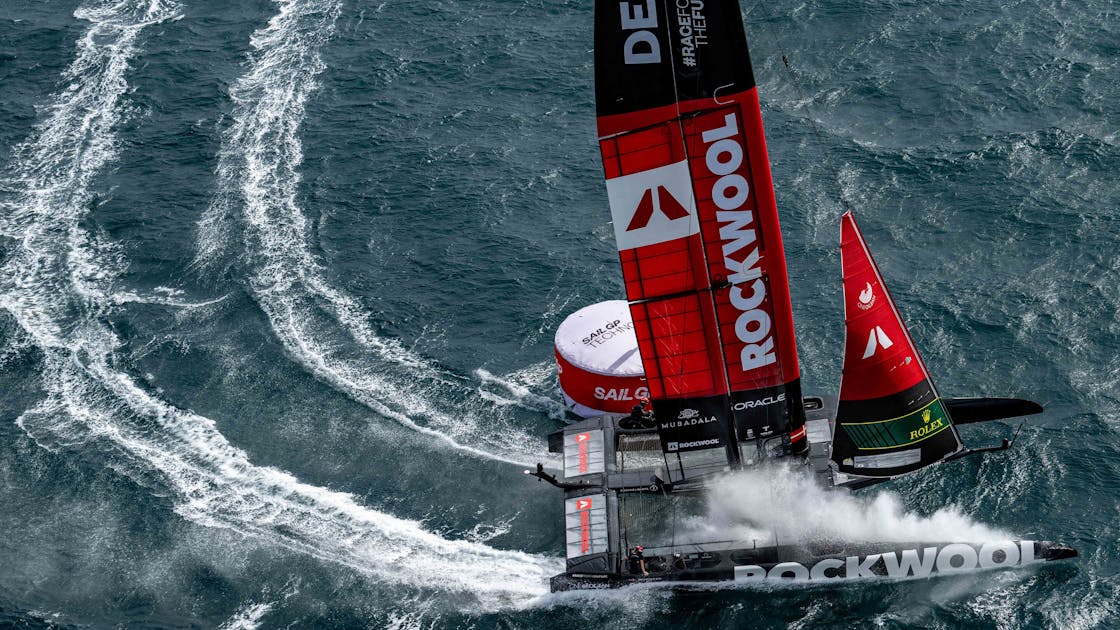
Denmark's Sail GP racing boat
Watch the danish sail gp boat in action.
The Denmark SailGP Team, presented by ROCKWOOL, unveiled its supercharged F50 catamaran in Sydney. With the mythological warrior Holger Danske – ensuring that the boat will turn heads as the team starts its training for the opening race in Sydney.
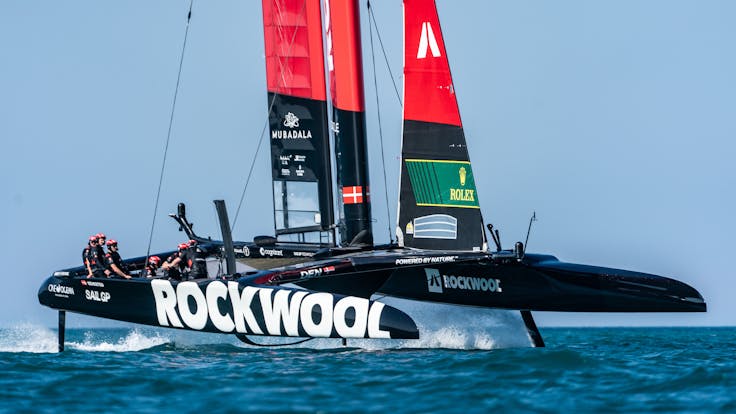
Everything you need to know about the supercharged SailGP boats
F50 vital statistics:, most popular sailgp stories.
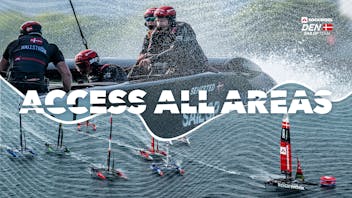
Access All Areas show
Go behind the scenes with ROCKWOOL Denmark SailGP Team to see all the unfiltered reactions to the biggest and most dramatic moments of each SailGP event
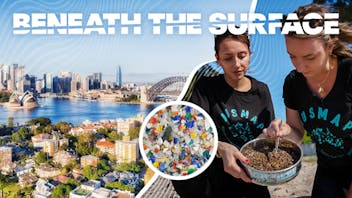
The Beneath The Surface show
We go Beneath The Surface of SailGP's iconic host cities, set a spotlight on great projects and curious mind and catch all the lastest with the Denmark SailGP Team. Join us as we travel the world and explore how innovation and science is helping solve the world's biggest challenges!
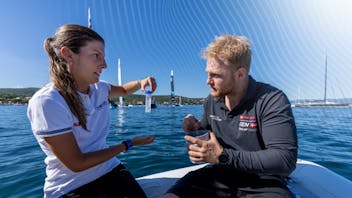
Discover a world of innovation and science
This is for those who appreciate the spectacle of sailing above the water at 100 km/h, and question “How?”. Innovation is a product of curious minds, good data and ambitious goals. But the best innovations are often hidden beneath the surface – inside walls, hulls, materials, computers and minds. We want to put what’s beneath the surface in the spotlight.

ROCKWOOL Denmark SailGP Team
The official home of the ROCKWOOL Denmark SailGP Team. Meet the team, read all the latest stories and explore a world of exciting content.
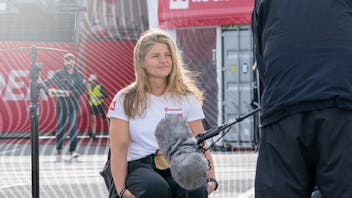
Sailing blog
All the latest news and stories from the Denmark SailGP Team and Team ROCKWOOL Racing.

Into the Depths
We travel to globe to connect to interesting and well-known faces from the worlds of sport, sustainability, business and entertainment, and explore beneath the surface of some of the biggest issues facing us as a modern society.
ROCKWOOL Group
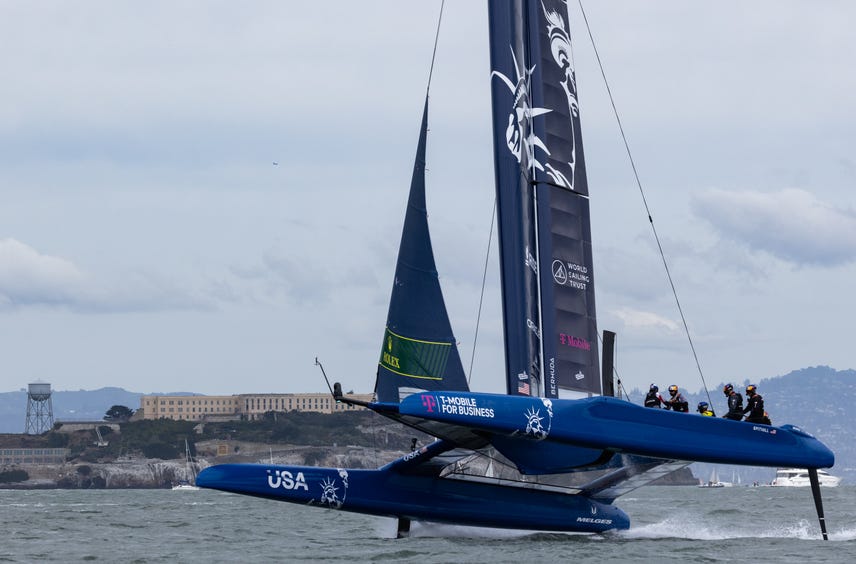
F50 Hydrofoils: Racing The World's Most Advanced Sailboats


I Tried Three Fitness Apps to Help My Postpartum Recovery

Samsung Galaxy S24 Ultra: Ultimate Good Lock Tips and Tricks

Did a Week With the Apple Watch Make Me Use My iPhone Less?
How Google Tests the Cameras in Its Pixel Phones

Boston Dynamics Retires Its HD Atlas Robot

What's the Future of Phones? Expert vs. AI

I Touched Disney's HoloTile Floor: Behind the Scenes at Imagineering

Can I Live With a Nokia Flip Phone in 2024?

How Google Captures 3D Images for Immersive View

How to Get the Best Answers From an AI Chatbot

The Apple Core

Alphabet City

The Daily Charge

What the Future

Cooley On Cars

Latest News

Everything Announced at Microsoft Build 2024

Sonos Ace Headphones Get Set to Take on the AirPods Max (First Look)

Microsoft Announces First Surface Copilot Plus PCs Powered by Qualcomm

Everything Announced at Microsoft's Surface Copilot Plus PC Event

Android 15: See New Features in Action

If Apple Makes Siri Like ChatGPT or Gemini, I'm Done

Bose SoundLink Max Review: How Does It Compare to the Cheaper SoundLink Flex?

Hands-On With Huawei's Pura 70 Ultra

How Many Times Did Google Say AI at I/O 2024?

SailGP F50 v America’s Cup AC50 catamarans
- America's Cup
- Inshore Racing

To the casual observer the F50 foiling catamarans that will be used in next year’s inaugural SailGP professional circuit will look pretty much identical to the America’s Cup AC50s boats introduced to the sailing world at the 36th Cup in Bermuda in 2016.
Both designs are about the same length and width, are powered by giant wingsails, and fly above the water on retractable adjustable foil daggerboards.
In reality though the SailGP F50s are a much more advanced version of their America’s Cup predecessors, having been almost entirely re-imagined and re-built over the past year by a team of around 100 people at the specialist Core Builders Composites facility in New Zealand.
Three of the six boats for the 2019 season have been built from components originating in the previous AC50 models, while the other three boats have been built from scratch.
Let’s take a look at what the main differences are between the America’s Cup AC50s and the SailGP F50 catamarans.
Table of Contents
Performance
Both classes are blisteringly fast of course, but the new F50s are expected to be significantly faster than their predecessors with the SailGP promoters claiming they will capable they say of speeds around 54 knots or almost 62 miles per hour/100 kilometres per hour.
The fastest recorded speed for an AC50 was 47.2 knots (54 mph/87 kph) achieved by the Swedish team Artemis Racing.
New advance foil package
The F50’s additional speed compared with the AC50 comes predominantly from the development of a new highly-advanced hydrofoil package.
The new foils have been built from a higher modulus (in layman’s terms: stiffer) carbon than previously. This means the F50 foils are thinner and so produce less aerodynamic and hydrodynamic resistance, allowing the boat to go faster.
The shape of the new foils has been designed to project outside the maximum beam (width) of the boat. According to the respective published specs of the two boats, the F50 is already more than a foot wider with a max beam is 8.8 metres (28 feet 11 inches), compared with the AC50 max beam of 8.47 m (27 feet nine inches).
The extra width of the F50 produces significantly more righting moment which directly translates into more power and more boat speed.
SailGP designers also believe that the shape of the new foils will result in the boats achieving higher speeds before cavitation (a phenomenon where the pressure on one side of the foil decreases to a point that the water begins to boil) occurs and slows the boat down.
Flight control enhancements
Put simply the designers have made the F50 catamarans significantly easier to get airborne and maintain stable flight.
Gone is the need for the teams to manually generate the hydraulic pressure required to run the flight control systems. The F50 flight control system runs on battery power, meaning no “heads down, bums up” cycling teams will be needed on the SailGP circuit.
The other big difference between the F50 flight control set up compared to the AC50 is that the F50s will have active control of the rudder pitch (the angle at which it is raked fore and aft which determines the angle of attack of the horizontal foil on the bottom of the rudder blades).
In the America’s Cup the teams were required to set and lock off the rudder pitch prior to the start of each race, making for some ragged edge of control scenarios for the helmsmen on more than one occasion when the conditions changed mid-race.
According to the SailGP website:
“The flight of the boat can be controlled from the twist grips on the steering wheel or from a joystick controlled by the crew member sitting in position 3 (flight controller). The ride height of the boat can be adjusted independent of the fore and aft bow down pitch.
“What seems like miles of hydraulic lines stitched inside the hulls and under the floorboards are used to distribute power to cant the boards to the most efficient angle and activate the rudder pitch control system.
“The helmsman can control the ride height, the jib sheet, and the rudder differential from push buttons on the steering wheel. The helmsman can also adjust the speed at which those functions are adjusted by adjusting a dial in the centre of the steering wheel.”
As well as reducing the number of sailors down from six in the America’s Cup to five in SailGP, the addition of battery power for the flight control systems means the sailors will have more time for sailing the boat rather than grinding to produce oil pressure.
In the America’s Cup in Bermuda we saw Emirates Team New Zealand sailor Blair Tuke controlling the boat’s flight via a handheld controller, leaving helmsman Peter Burling free to concentrate on sailing the boat fast and able to look around to assess the team’s position on the racecourse.
The SailGP boats have been set up similarly with one crew member designated as “flight controller”, freeing up the helmsman to “just” drive, while the wing trimmer will be responsible for maximising the boat’s straight line speed. With batteries connected to a new hydraulic accumulator to power the foil and rudder pitch controls, the jib sheet, and the wing twist control, the two grinders are there to provide power for the wing trimmer to operate the wing sheet.
Manoeuvrability
The introduction of battery powered flight control means that rather than having to wait for sufficient oil pressure to be generated by the grinders before a tack or gybe can be undertaken, the teams will be able to carry out any manoeuvre at will.
In theory at least this should keep the racing close and make for some thrilling boat on boat action when the teams converge.
Design evolution
In a similar way to how Volvo Ocean Race was able to tightly control the evolution of the one-design VO65 between the 2014-15 and 2017-18 editions to introduce improvements across the fleet, SailGP is committed to the continual evolution of the F50s.
A central design team headed by Mike Drummond has been set up to ensure the F50 class remains at the cutting edge. The hydraulic and electrical control systems and software are being developed and improved at Artemis Technologies a company led by British America’s Cup skipper and Olympic medalist Iain Percy.
Planned development areas include new wing sail designs based on a modular system to allow teams to use a range of rig sizes – 18m, 24m and 28m – in different wind strengths.
The first heavy-weather wings could be ready for testing as early as the event in Cowes in August 2019 and if successful could be used at 2019 season finale in Marseille.
Leave a Reply Cancel reply
This site uses Akismet to reduce spam. Learn how your comment data is processed .


COMMENTS
The F50 is a one-design foiling catamaran used in the SailGP race series. The name is an abbreviation of "Foiling" and "a hull length of 50 feet".The F50s are adapted from the AC50s used in the America's Cup, with modifications including new control systems and modular wingsails. The F50s are one of the fastest racing classes in history, with a predicted top speed of 52.2 knots (96.6 km/h, 60 ...
Teams must therefore work together to fly as high as possible without flying too high and crashing into the water, rising speed and losing speed in SailGP's high pressure racing. The F50's cutting edge technology is evident in its status as the first boat to hit 99.94 km/h during racing - and it has a top speed of over 100 km/h.
The F50 is an awe-inspiring racing machine capable of reaching speeds up to 50 knots (60mph/100kph). The team who designed and built the fleet explains what ...
The F50 has an estimated top speed of 52+ knots (60 mph), and the Australia SailGP Team holds the honour of becoming the first crew to break the 50 knot barrier in sail racing, doing so at Cowes, UK in August 2019. "I was surprised actually, as I thought the 50 knot barrier would be broken in San Francisco," says SailGP CEO Sir Russell ...
Canting the foil backwards increases its angle of attack and creates more lift, while canting it forwards reduces lift and can even create a downforce. ... As breathtaking as the current speeds of the F50 catamarans may be - the top speed in the 2022 season of SailGP was just under 100 kilometres per hour (km/hr), highway driving speed on ...
The F50 is the new one-design foiling 50ft catamaran used for the SailGP circuit, and is adapted from the AC50 used in the 2017 America's Cup. Mark Chisnell steps aboard TAGS: Foiling and ...
Sailing vocabulary Foils - Foils are 'ski-like structures' mounted below the hull of the catamaran. When moved through the water, they generate lift helping the F50 to fly. Wingsail - twin-skin sail or double skin sail is a variable-camber aerodynamic structure that is fitted to a marine vessel in place of conventional sails. Wingsails are analogous to airplane wings, except that they are ...
WARNING 🚨 This video is super technicalJoin Phil Robertson on this in depth tour of the Canada SailGP Team F50, one of the most complex and advance boats on...
Take a look inside the cockpit of an F50 catamaran, and learn more about the roles of each athlete on board, courtesy of a highly qualified tour guide: Great...
An F50 catamaran preparing for the Sail GP series recently even broke this barrier, reaching an incredible speed of 50.22 knots (57.8mph) purely powered by the wind. This was achieved in a wind of ...
At 50-feet long, powered by an efficient wingsail and flying on hydrofoils, the DNA of the new F50 catamaran is clear to see. While the new boat is a derivative of the last America's Cup and may look the same on the outside, under the skin the new machines are very different beasts and even more advanced. ... The flip side was that building ...
Ahead of this weekend's Great Britain SailGP in Plymouth, British helmsman Paul Goodison shares what it's like to drive a foiling F50 catamaran. Paul Goodison is one of the most talented foiling ...
This month Nathan Outteridge nominates the foiling cat used in SailGP, the F50. "Without question the SailGP F50 is the best boat that I have ever sailed. The headline top speeds of over 50 ...
The F50 Catamaran is an impressive feat of engineering and design, with features that make it the perfect racing boat for taking on the toughest of conditions. Its unique hull design, aerodynamic shape, hydrofoil system, and advanced sail design all come together to provide superior speed and stability, allowing it to reach speeds of up to 50 ...
In SailGP, five-member crews representing six countries race identical F50 foiling catamarans in the world's most famous harbours. Complex control systems an...
One key outcome was the F50's ability to foil in lighter winds than usual - a surprising result given the T-Foils are around 80kg heavier combined than the existing L-Foils. The first on water tests, executed by Danish driver Nicolai Sehested, saw the team 'work up the boat', from two hulls in the water, to one hull, and finally to ...
F50 vital statistics: Strict one-design, development class rule. Length overall: 15 meters (50 feet) Beam (width): 8.8 meters (including foils) (29 feet) Wing Height: currently 24 meters (78.75 feet), evolving to a 18m (59.05 feet) heavy air wing and a 28m (91.86 feet) light air wing. Crew: 5, consisting of helmsman, wing-trimmer, flight ...
Vision Pro App Walkthrough -- VisionOS 1.0.3. 12:11. Sports. With razor-sharp hydrofoil catamarans that help them hit speeds of 60 miles an hour, the athletes of SailGP are pushing the limits of ...
Great Britain SailGP Team" Chris Draper and Stu Bithell give a crash course in how to fly an F50, what happens when things go wrong, plus insight into the dy...
2 OCTOBER 2018 News. SailGP's new F50 wingsailed catamaran will be an incredible high performance racing machine. The F50 is predicted to break the 50 knot barrier as the most challenging, high-tech one-design racing boat ever produced. At a glance, one could be forgiven for thinking it looks familiar to the AC50 used at the last America's ...
SailGP. - 17th October 2018. To the casual observer the F50 foiling catamarans that will be used in next year's inaugural SailGP professional circuit will look pretty much identical to the America's Cup AC50s boats introduced to the sailing world at the 36th Cup in Bermuda in 2016. Both designs are about the same length and width, are ...
Ride Control Systems (RCS) on high-speed vessels help improve passenger comfort and mitigate dynamic structural loads. Incat Tasmania Wave-Piercing Catamarans (WPC) use RCS consisting of a central T-foil, and a stern tab on each deli-hull. Previous towing tank studies on a 2.5 m model of a 112 m WPC have demonstrated significant reductions in motions with the use of a T-foil and stern tabs. To ...
Learn all you need to know about SailGP, plus how Sail Racing works and key information about the F50 catamaran. Learn all you need to know about SailGP, plus how Sail Racing works and key information about the F50 catamaran Skip to Main Content. Halifax 1 - 2 Jun 2024. 00. Days: 00. Hours: 00. Minutes: 00. Seconds ...
With razor-sharp hydrofoil catamarans that help them hit speeds of 60 miles an hour, the athletes of SailGP are pushing the limits of physics and human endur...